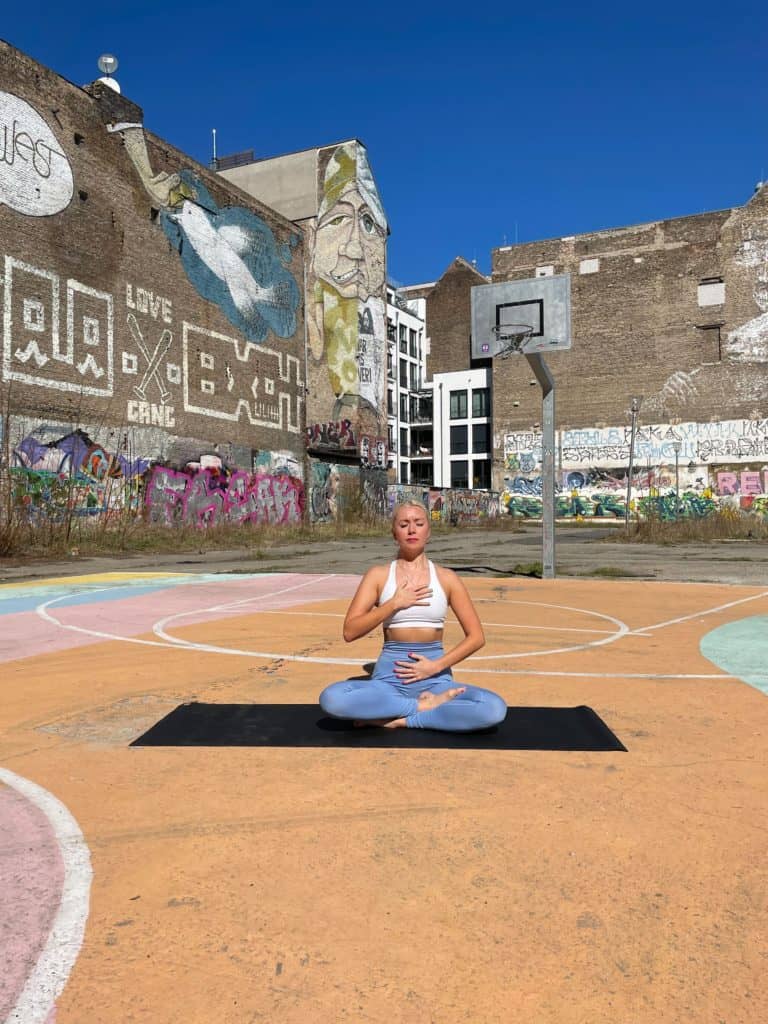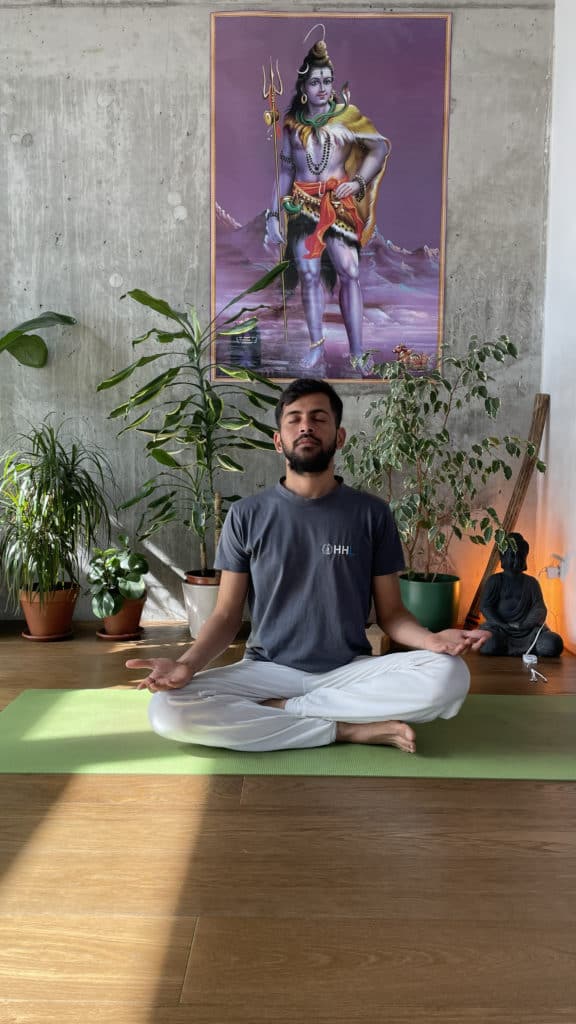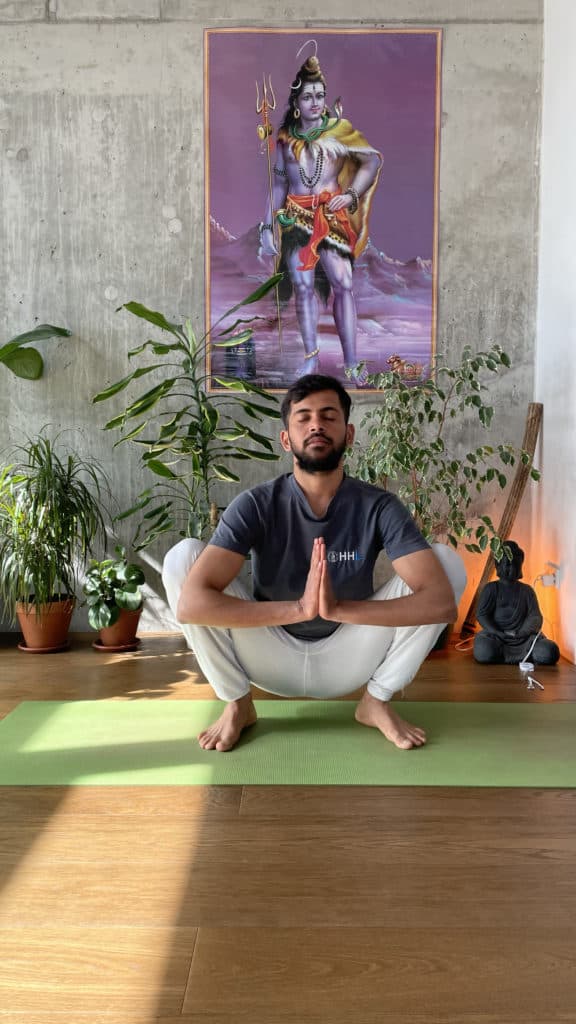
Spring clean your body and mind: how to detox the right way
The days are getting longer and the temperatures are rising, so for many that means it’s time for a spring clean. But it’s not just your home that benefits from a thorough clean out – your body and mind also needs declutter. Spring is a good time to detox. The mild weather acts as a natural mood-booster and with all the fresh fruit and vegetables in the supermarkets, it’s the perfect time to gather up smoothie ingredients.
But how can you detox the right way? We spoke to three experts in nutrition, exercise and mindfulness to find out the best way to detoxify your body to see long-term benefits.
Detox through nutrition

There are countless products that help detox your body – various teas, juice cures, powders or even pills. But are they really good for you? And will they help cleanse your body? Lina is a certified nutritionist, and shares how detoxing through nutrition with a long-term diet change is hugely beneficial.
What does the term ‘detox’ actually mean and what happens to our bodies when we do it?
“The term ‘detox’ comes from the English term ‘detoxification’ and was originally used in the field of medicine,” says Lina. “In naturopathic medicine and wellness, detox is also used as a synonym for healing as well as juice or water fasting. Currently, the market is booming. So what’s it all about?

Detoxification is a biochemical process in the human body where breakdown products and pollutants of non-water-soluble substances are converted into water-soluble substances so the body can eliminate them. Your digestive system, liver and kidneys act as your body’s built-in detoxification system.”
“There’s no scientific evidence to support the advertised benefits of detox juice cleanses or fasting diets,” Lina explains. “We all have great systems in our bodies that do this on a daily basis anyway. Some fasts, like fruit juice fasts, can actually be harmful, especially if you do it on your own and don’t seek medical advice beforehand. However, by eating a healthy diet, you can support the detoxification processes in your body long-term.”
What should a gentle detox diet or detox-promoting diet look like?
To kick-start your detox, do a one to three day juice cleanse. “This should include 75% vegetables,” says Lina. Testimonials often share benefits like improved concentration and increased energy after a detox diet. Lina says this is due to the elimination of processed foods that contain lots of fat and sugar. It’s important that plenty of fruit and vegetables are on the menu, because eating natural and nutritious food is just as important as avoiding alcohol and nicotine (as well as other intoxicants). It’s also great to exercise in the fresh air during a detox.
To effectively detox, reduce the amount of meat and dairy you consume, or cut them out completely along with white flour, sugar and saturated fats. Eat whole grain products instead, as well as starchy vegetables and legumes and healthy fats like nuts, seeds, and vegetable oils. Replace coffee with green tea or matcha, but drink in moderation before 11 a.m. Stay hydrated with herbal teas and still water so your system is taking in enough liquid to ensure a well-functioning detox system.
Bitter foods like artichokes, arugula, radicchio, native cabbage varieties and herbs such as dandelion, nettles, goutweed and milk thistle help detoxify your organs. Leafy greens help heal your gallbladder and buckwheat heals your kidneys.
How often should you detox?
Lina recommends you incorporate a natural whole food diet in order to gently detox your body in a sustainable way. This will detoxify your organs in the long run, and will give you more energy, improve your mood and positively impact your body. You’ll notice your skin is more radiant and your hair stronger and healthier.
Lina says sports performance and recovery will also improve with a healthy diet. You get sick less often because your immune system becomes stronger. Add to that enough sleep and exercise, and there’s nothing standing in your way from being the healthiest version of yourself.
Detox through exercise and wellness
Combining a natural whole food diet with movement and wellness helps detoxify your body, and professional yogi Julia explains how.
How does exercise and wellness help us detox?
“Accelerated breathing and excess sweating from exercise increases blood circulation which has a detoxifying effect,” Julia says. Your body doesn’t need extra energy to process the toxins once they’re eliminated from your body, so just like with a diet, long-term sports habits help your body detox.
What are some detox methods when it comes to exercise?
“Any kind of activity that gets your heart rate up kick-starts the detox effect,” Julia says. This works with all types of sports – whether it’s a HIIT workout, a spinning class or bootcamp. Circulation helps your body detox, but other activities also help cleanse your body. “Wellness like massages and sauna sessions is great for your body,” says Julia. “Massages, for example, help flush toxins from your body by improving your circulation, which helps your organs naturally detoxify. Sauna sessions are cleansing because your body works up a sweat which eliminates toxins.”



As a professional yogi, Julia understands the benefits of sports. Within yoga, certain postures like twists and certain breathing exercises help your body detoxify. While these postures and practices don’t directly detoxify the body, they do help improve circulation, which in turn benefits the internal organs and helps with the release of toxins from your body. Try incorporating twists into your practice with exercises like a Table Top Spinal Balance. Here you bring the opposite hand to the opposite foot and breathe deeply to improve circulation. For a detoxifying breathing exercise, sit down and put one hand on your belly and one on your chest. Breathe deeply into your belly, then into your chest, then up to your chest, and out of your chest, rib cage and belly. Keep doing that until you feel a calming effect. Believe it or not, about 70 percent of toxins are eliminated through breathing.
Detox through mindfulness
In addition to diet, exercise and breathing, the right mindset helps detoxify the body. We spoke with Sri from Green Yoga to find out more about mental detoxing.
Why is it important to detox mentally?
“Basically, it’s as important as brushing your teeth regularly, because silence and meditation creates clarity in our minds,” Sri explains. This helps you perceive your reality as it is, without the influence of the past or the future. “We tend to hold experiences from the past or fear of the future in the back of our minds, but meditation helps us release that,” Sri says. The ultimate goal of meditation is to move beyond the thinking mind and into a space of thoughtlessness, with the aim of staying in that space of silence between thoughts and working to expand that space.
What methods help us mentally detoxify?
There are countless meditation techniques to try, depending on your level and preference. For beginners, Sri recommends simple breathing techniques such as anapana meditation or chanting. Later, you can slowly progress to more advanced forms of meditation such as Vipassana. The key here is discipline, so try to follow a technique regularly for at least ten to fifteen minutes. The longer you practice meditation with discipline, the more you’ll feel your progress. Over a period of time you will effortlessly enter stillness, and stress and intrusive thoughts will decrease.


How often should we meditate?
Sri says meditation should become a lifestyle. You can practice meditation all the time – while cleaning, ironing, eating, walking – and work on your practice whatever you’re doing. When thoughts come, beginners can focus on just letting them go and staying present. Sri recommends beginners meditate regularly for about ten to fifteen minutes, preferably at the beginning of the day. ”As you develop in your practice, you’ll want to spend more time in stillness and you can adjust the time accordingly.”
How does meditation work?
The experience and perception of meditation is subjective. Sri explains it depends on your chosen meditation technique. In Vipassana meditation, the focus is on observing the sensations in your body and being present without judging them. Some chanting techniques help you get out of your head and into your heart quickly to help you learn how to connect with emotions.
As mentioned earlier, your technique will likely change over time, so don’t get too attached to any one technique. When you get into the space between thoughts, it’s important to expand that space of thoughtlessness. The longer you stay in that space, the more the silence will speak to you. Just being in this space builds a strong bridge to your intuition and acts as a gateway to your creative potential.



Comments